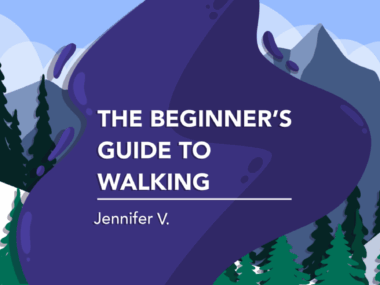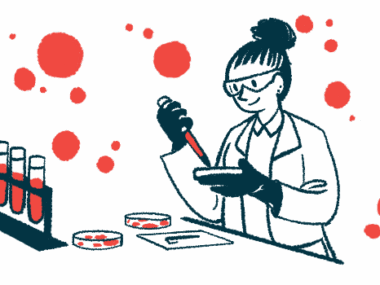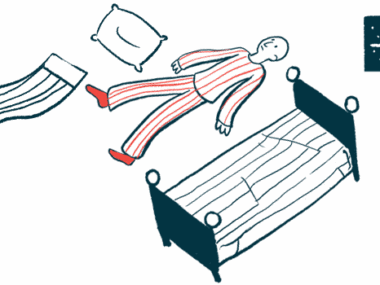What coping with chronic illness and disability looks like
How I'm leaning into advocacy, rest, and community
Written by |

In the morning, I like to wake up a few minutes before my family does. As I sip my tea and watch the sunlight spill through the windows, I usually use that quiet time to mentally prepare for the day ahead. But lately, things have shifted.
I’m 43, and this is the first time since I was 14 that I’m not working or consulting full time, nor am I volunteering. During a recent neuromyelitis optica spectrum disorder (NMOSD) flare, I had the chance to speak with a psychologist. We talked about how various activities help me cope with the difficult reality of living with this disease and the concept of allowing myself to be disabled.
At first I was uncomfortable with the idea of giving myself the necessary time to recover. I worry that people will think I’m lazy or that they’ll ask me, “What do you do all day?” To me, that question seems dismissive, as if disability robs us of our drive, creativity, and our ability to contribute to the world, which isn’t true. Life with a disability can be just as rich, demanding, and meaningful as life without one, although it’s undeniably different.
Advocacy and the art of rest
Currently, I’m leaning into hobbies I’d been neglecting for a while. Whether it’s tending to my garden, brushing color onto canvas, or scribbling thoughts onto paper, these pursuits give me purpose and joy. I’ve also had time to think about how to make them more adaptive, such as by using raised beds and indoor plants for my gardening. My hobbies have become a form of therapy and a type of resistance to my new reality.
When I first faced chronic illness and disability, I turned to advocacy. Whether through public speaking, peer support, or writing for a rare disease community website, I know my lived experience brings a much-needed perspective. Yet, I’m disappointed that patients who do advocacy work often aren’t paid for their efforts. Over the years, I’ve recognized that advocacy is skilled and emotionally demanding work, and I think we’re long overdue for a conversation about compensation.
Advocacy and volunteer work by disabled folks sustains organizations, builds communities, and informs healthcare policy, so why is it still considered as charity rather than labor that deserves compensation?
One of the most important yet misunderstood aspects of disabled life is rest. Now that I finally have time to acknowledge how NMOSD affects my life, I recognize that rest is a nonnegotiable component of survival that I’ve been neglecting. One aspect is fatigue, which is more than just feeling tired. For me, fatigue comes in the form of a full-body shutdown that demands attention, and it can happen at the most inconvenient times. Yet, I still feel guilty about taking a midday nap, for example, which is something I need to overcome.
When my NMOSD symptoms were stable, I could easily handle a busy schedule. But in the past year, with multiple relapses, it’s meant juggling doctor appointments, tracking symptoms, undergoing numerous tests, coordinating insurance coverage, and switching treatments. The time it takes for all of this self-care is enormous. Managing a chronic condition is often labor that goes unseen by others, yet it’s crucial to everything else we attempt to do.
Perhaps one of the most subtle but persistent challenges of disabled life is loneliness. Friends may drift away. Family members might not entirely understand one’s situation. Isolation can creep in, especially when flare-ups or mobility issues prevent in-person interactions. Staying connected, however we can, is essential.
In this regard, the NMOSD community has offered me a lifeline. Support groups, online forums, virtual events, and shared stories have created a network of understanding and compassion. Many of the friendships I have with other NMOSD patients look different from my other relationships. While these friendships happen through screens and via phone conversations, they are no less powerful than in-person interactions.
I also now recognize the importance of regular mental health check-ins, especially now that I’m spending a lot more time alone.
This disabled life looks different to me now than it has over the past 16 years. For the first time, I’m leaning into recovery. I’m advocating, creating, resting, staying connected, and most importantly, designing the life I want. Living with a disability isn’t a tragedy or a sabbatical. It’s a different rhythm with a powerful and valuable cadence that deserves to be seen, respected, and supported.
Note: Neuromyelitis News is strictly a news and information website about the disease. It does not provide medical advice, diagnosis, or treatment. This content is not intended to be a substitute for professional medical advice, diagnosis, or treatment. Always seek the advice of your physician or other qualified health providers with any questions you may have regarding a medical condition. Never disregard professional medical advice or delay in seeking it because of something you have read on this website. The opinions expressed in this column are not those of Neuromyelitis News or its parent company, Bionews, and are intended to spark discussion about issues pertaining to neuromyelitis optica spectrum disorder.







Leave a comment
Fill in the required fields to post. Your email address will not be published.